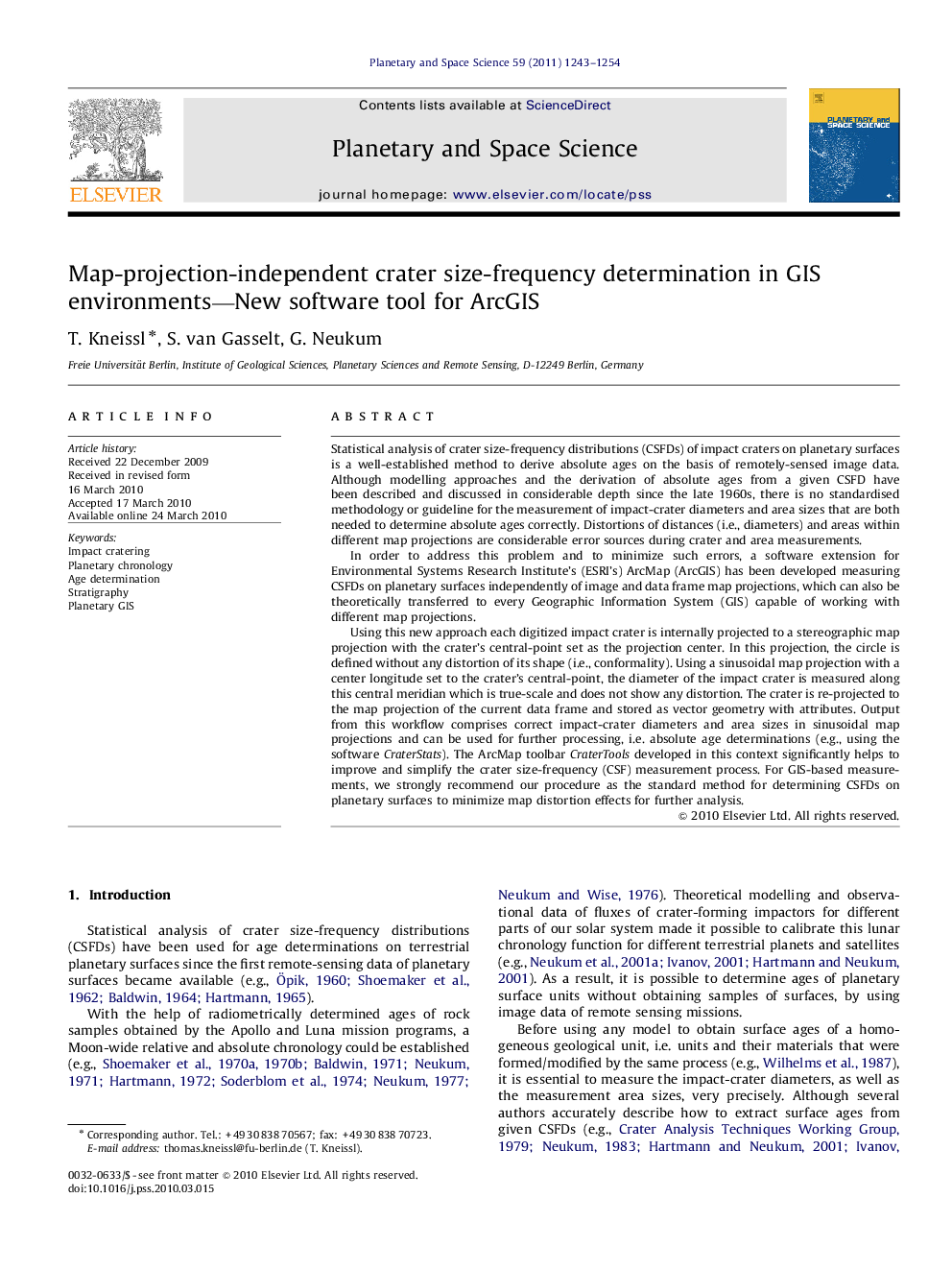| کد مقاله | کد نشریه | سال انتشار | مقاله انگلیسی | نسخه تمام متن |
|---|---|---|---|---|
| 1781552 | 1523963 | 2011 | 12 صفحه PDF | دانلود رایگان |

Statistical analysis of crater size-frequency distributions (CSFDs) of impact craters on planetary surfaces is a well-established method to derive absolute ages on the basis of remotely-sensed image data. Although modelling approaches and the derivation of absolute ages from a given CSFD have been described and discussed in considerable depth since the late 1960s, there is no standardised methodology or guideline for the measurement of impact-crater diameters and area sizes that are both needed to determine absolute ages correctly. Distortions of distances (i.e., diameters) and areas within different map projections are considerable error sources during crater and area measurements.In order to address this problem and to minimize such errors, a software extension for Environmental Systems Research Institute's (ESRI's) ArcMap (ArcGIS) has been developed measuring CSFDs on planetary surfaces independently of image and data frame map projections, which can also be theoretically transferred to every Geographic Information System (GIS) capable of working with different map projections.Using this new approach each digitized impact crater is internally projected to a stereographic map projection with the crater's central-point set as the projection center. In this projection, the circle is defined without any distortion of its shape (i.e., conformality). Using a sinusoidal map projection with a center longitude set to the crater's central-point, the diameter of the impact crater is measured along this central meridian which is true-scale and does not show any distortion. The crater is re-projected to the map projection of the current data frame and stored as vector geometry with attributes. Output from this workflow comprises correct impact-crater diameters and area sizes in sinusoidal map projections and can be used for further processing, i.e. absolute age determinations (e.g., using the software CraterStats). The ArcMap toolbar CraterTools developed in this context significantly helps to improve and simplify the crater size-frequency (CSF) measurement process. For GIS-based measurements, we strongly recommend our procedure as the standard method for determining CSFDs on planetary surfaces to minimize map distortion effects for further analysis.
Journal: Planetary and Space Science - Volume 59, Issues 11–12, September 2011, Pages 1243–1254